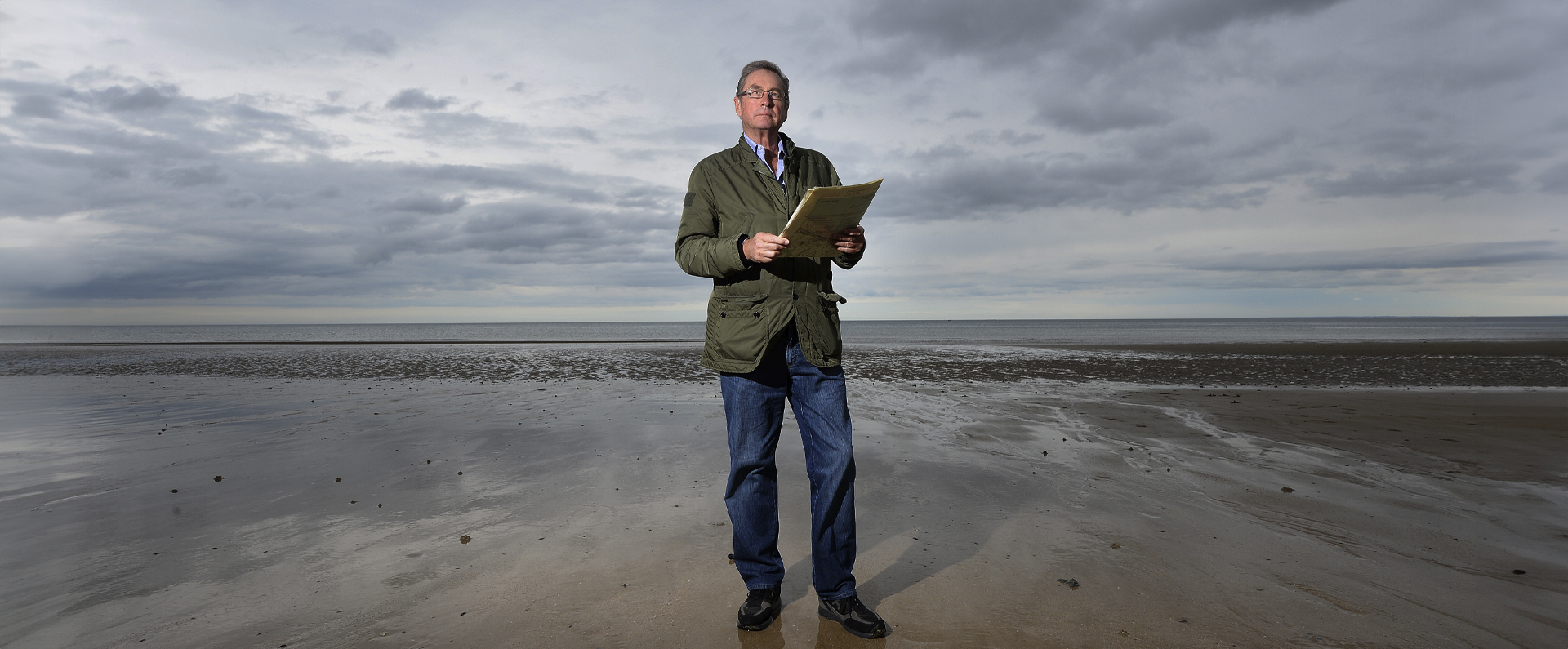
Published in Britain at War in September 2017.
Private George Imlach McIntosh VC: aggression
George Imlach McIntosh was born in Rathven, Banffshire, on 22 April 1897. He was the son of Alexander McIntosh, a fisherman, and his wife, Mary. As a young boy, he lived in Fraserburgh, Aberdeenshire, and attended Fraserburgh Academy.
In 1910, his family moved to Buckie, Banffshire, and McIntosh became apprenticed to Tom Jones & Son, a local wood merchant. Soon after beginning his apprenticeship, he worked on the Cluny Dock extension to Buckie harbour. As a teenager, he was a keen footballer and played for Buckie Thistle FC.
In 1913, McIntosh joined the 6th Battalion, Gordon Highlanders (Territorial Force). On the outbreak of hostilities in August 1914, he was serving in Tom Jones & Son’s sawmill and, despite being only 17, was quickly mobilised. He arrived with his unit in France on 10 November 1916 and went into the line on 6 December 1914. Subsequently, he saw action at many of the major battles including Neuve Chapelle, Festubert, Givenchy, Loos and the Somme.
Early on in the conflict, he suffered from trench-foot, which forced his evacuation, but he soon returned to the frontline. However, it was on the opening day of the Third Battle of Ypres that Private McIntosh showed such outstanding bravery that he was awarded the VC.
The citation for his decoration described the role of McIntosh, by then aged 20, in fierce fighting north of St Julien, Belgium on 31 July 1917:
“For most conspicuous bravery when, during the consolidation of a position, his Company came under machine gun fire at close range.
“Pte. McIntosh immediately rushed forward under heavy fire, and, reaching the emplacement, he threw a Mill’s Grenade into it, killing two of the enemy and wounding a third. Subsequently, entering the dug-out, he found two light machine guns, which he carried back with him.
“His quick grasp of the situation and the utter fearlessness and rapidity with which he acted, undoubtedly saved many of his comrades and enabled the consolidation to proceed unhindered by machine gun fire.
“Throughout the day the cheerfulness and courage of Pte McIntosh was indomitable, and to his fine example, in a great measure, was due the success which attended his Company.”
Hic VC was announced in The London Gazette on 6 September 1917. Just six days later, he returned to the UK on leave and, on 13 September, he arrived unannounced at his parents’ home in Buckie. After word spread of his VC and his homecoming, he was presented with a purse of 50 gold sovereigns by his pre-war employer. Such was his new hero status that further gifts soon followed.
McIntosh received his VC from King George V in an investiture at Ibrox Park, Glasgow, on 18 September 1917. In an apparent attempt to prevent him facing further extreme danger, he was appointed as the batman to a senior field officer. However, he made it clear that he preferred to serve with his battalion and he soon resumed his frontline duties with the Gordon Highlanders.
McIntosh survived the rest of the war and, after being demobbed, returned to Buckie where he worked as a herring runner for Thomson & Brown, a local fish sales company. In July 1919, he moved back to Fraserburgh where, in the post-war depression, his jobs included working as the groundsman at Buckie bowls club.
On 27 April 1923, McIntosh got married in Elgin, Morayshire, to Alexandrina Sutherland, and the couple went on to have a son and a daughter. On 1 July 1939, McIntosh was appointed the janitor and groundsman of Buckie High School.
As the Second World War dawned, McIntosh tried to rejoin his old regiment but he was too old, at 42, to be accepted as an infantryman. On 26 August 1939, he was mobilised into the RAF and he played a prominent role in the Second World War, although this time away from the frontline. From 1940-1, he served as Flight Sergeant in charge of ground defences at RAF St Eval, Cornwall.
In 1941, he was appointed as Station Warrant Officer at Reykjavik, Iceland. During this service, he was attached to HMS Manilla, a maintenance ship running between Iceland and Archangel, Russia. On one voyage, the ship was attacked and set on fire by enemy bombs. Although a number of crew were preparing to abandon ship, McIntosh showed both bravery and leadership in persuading them to remain at their posts and help put out the fires that threatened the petrol tanks. For his actions, he was Mentioned in Despatches.
During the 1939-45 conflict, McIntosh also served at various RAF fighter stations in the UK, including Manston, Kent, and Coltishall, Norfolk. In 1945, he was demobbed at Ludham, Norfolk, and returned to his pre-war school janitor’s job. In 1955, McIntosh was made a Freeman of the Royal Borough of Buckie.
In 1956, he attended the VC centenary celebrations in London, and four years later, in February 1960, he took a day off from his job to become the first and only “ranker” in the history of his regiment to take the salute at a passing out parade.
Later the same year, he encountered serious health problems, including a series of heart attacks which resulted in two operations. McIntosh died in Woodend Hospital, Aberdeen, on 20 June 1960, aged 63. Four days later, hundreds of mourners attended his funeral when he was buried at the New Cemetery, Buckie, with full military honours.
There is a portrait in his honour at the Gordon Highlanders Museum in Aberdeen. I become the proud custodian of McIntosh’s medal group in 1996 when I purchased it at a Spink auction in London. This summer I loaned this splendid medal group to the Gordon Highlanders Museum in Aberdeen to mark the centenary of McIntosh’s VC action.
Download a PDF of the original Britain at War article
For more information, visit:
LordAshcroftOnBravery.com

